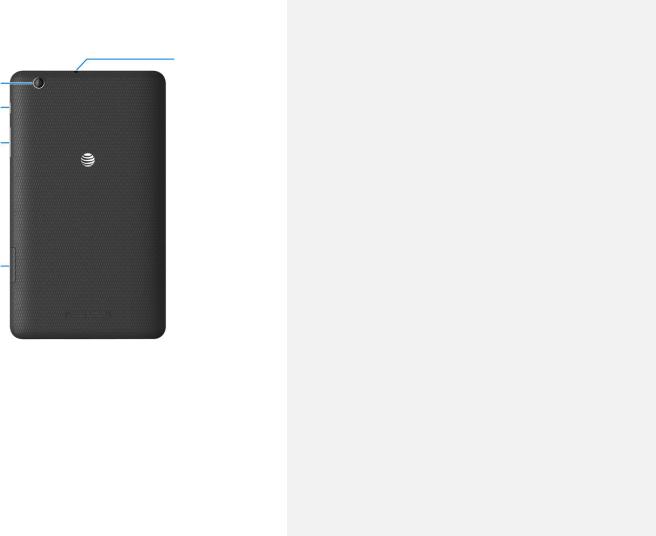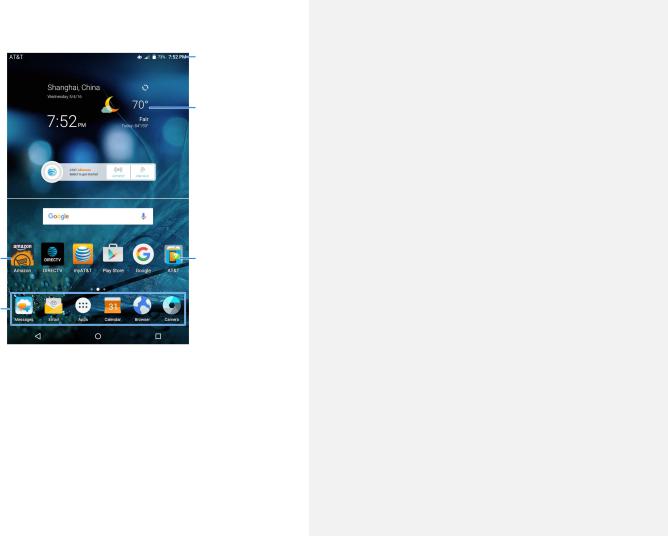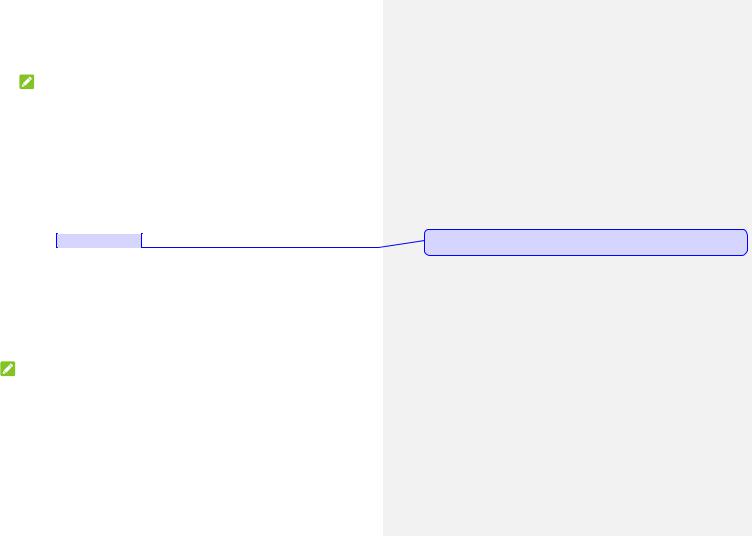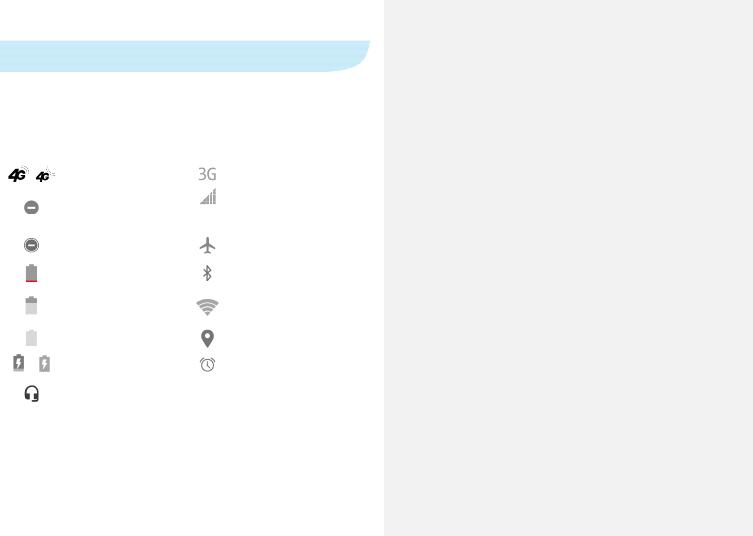ZTE K88 Users Manual

K88
User Manual
1

About This Manual
Thank you for choosing this ZTE mobile device. In order to keep your device in its best condition, please read this manual and keep it for future reference.
Copyright
Copyright © 2016 ZTE CORPORATION
All rights reserved.
No part of this publication may be quoted, reproduced, translated or used in any form or by any means, electronic or mechanical, including photocopying and microfilm, without the prior written permission of ZTE Corporation.
Notice
ZTE Corporation reserves the right to make modifications on print errors or update specifications in this guide without prior notice. This manual has been designed with the utmost care to ensure the accuracy of its content. However, all statements, information and recommendations contained therein do not constitute a warranty of any kind, either expressed or implied. Please refer to For Your Safety to be sure to use your device properly and safely. We offer self-service for our smart terminal device users. Please visit the ZTE official website (at http://www.zteusa.com/) for more information on self-service and supported product models. Information on the website takes precedence.
Disclaimer
ZTE Corporation expressly disclaims any liability for faults and damages caused by unauthorized modifications of the software.
Images and screenshots used in this manual may differ from the actual product. Content in this manual may differ from the actual product or software.
2

Trademarks
ZTE and the ZTE logos are trademarks of ZTE Corporation.
Google and Android are trademarks of Google, Inc.
The Bluetooth® trademark and logos are owned by the Bluetooth SIG, Inc. and any use of such trademarks by ZTE Corporation is under license.
microSDHC Logo is a trademark of SD-3C, LLC.
Qualcomm® Snapdragon™ processors are products of Qualcomm Technologies, Inc.
Qualcomm and Snapdragon are trademarks of Qualcomm Incorporated, registered in the United States and other countries. Used with permission.
Manufactured under license from Dolby Laboratories. Dolby, Dolby Audio, and the double-D symbol are trademarks of Dolby Laboratories.
Other trademarks and trade names are the property of their respective owners.
Version No.: R1.0
Edition Time: April 7, 2016
3

Contents |
|
Getting Started ......................................................... |
9 |
Getting to Know Your Tablet............................................... |
9 |
Knowing the Keys............................................................ |
11 |
Installing the nano-SIM Card and the microSDHC™ Car d 11 |
|
Charging the Battery........................................................ |
12 |
Extending the Battery Life................................................ |
14 |
Powering On/Off .............................................................. |
14 |
Setting Up for the First Time ............................................ |
14 |
Locking/Unlocking the Screen and Keys ............................ |
15 |
Using the Touch Screen................................................... |
15 |
Getting to Know the Home Screen ................................... |
18 |
Personalizing.......................................................... |
21 |
Changing the System Language ...................................... |
21 |
Setting the Date and Time................................................ |
21 |
Changing Notification Sound............................................ |
21 |
Turning On/Off System Sounds........................................ |
22 |
Adjusting Volume............................................................. |
22 |
Using Do Not Disturb Mode ............................................. |
22 |
Applying New Wallpapers ................................................ |
23 |
Changing Screen Brightness ........................................... |
24 |
Setting the Theme ........................................................... |
24 |
Setting the Home Screen Transition Effect ....................... |
25 |
Protecting Your Tablet With Screen Locks ........................ |
25 |
4

Protecting Your Tablet With Screen Pinning |
......................26 |
Knowing the Basics............................................... |
28 |
Monitoring the Tablet Status ............................................. |
28 |
Managing Notifications ..................................................... |
29 |
Managing Icons and Widgets ........................................... |
32 |
Organizing With Folders................................................... |
34 |
Rearranging the Primary App Icons .................................. |
34 |
Entering Text.................................................................... |
35 |
Editing Text ...................................................................... |
44 |
Opening and Switching Apps............................................ |
45 |
Connecting to Networks and Devices.................. |
46 |
Connecting to Mobile Networks ........................................ |
46 |
Connecting to Wi-Fi.......................................................... |
47 |
Using Wi-Fi Direct®.......................................................... |
51 |
Connecting to Bluetooth Devices...................................... |
52 |
Connecting to Your Computer via USB ............................. |
55 |
Using the microSDHC Card as Portable or Internal Storage |
|
........................................................................................ |
56 |
Sharing Your Mobile Data Connection .............................. |
60 |
Connecting to Virtual Private Networks............................. |
63 |
Web Accounts ........................................................ |
65 |
Adding or Removing Accounts.......................................... |
65 |
Configuring Account Sync ................................................ |
66 |
Email ....................................................................... |
68 |
5

Setting Up the First Email Account ................................... |
68 |
Checking Your Emails...................................................... |
68 |
Responding to an Email................................................... |
69 |
Writing and Sending an Email .......................................... |
70 |
Adding and Editing Email Accounts.................................. |
71 |
Changing General Email Settings .................................... |
72 |
Web Browser .......................................................... |
73 |
Opening a Web Page or Searching the Web .................... |
73 |
Using Multiple Browser Tabs ............................................ |
74 |
Downloading Files ........................................................... |
74 |
Camera.................................................................... |
75 |
Capturing a Photo............................................................ |
75 |
Recording a Video ........................................................... |
76 |
Using Manual Camera Mode ........................................... |
77 |
Using Other Camera Modes ............................................ |
78 |
Customizing Camera/Camcorder Settings........................ |
79 |
Gallery..................................................................... |
81 |
Opening Gallery............................................................... |
81 |
Working With Albums....................................................... |
81 |
Working With Pictures...................................................... |
82 |
Retouching Your Pictures................................................. |
83 |
Playing Videos................................................................. |
84 |
Play Music .............................................................. |
86 |
Playing Your Music .......................................................... |
86 |
6

Managing Playlists ........................................................... |
88 |
Video Player ........................................................... |
90 |
Opening the Video Library................................................ |
90 |
Playing and Controlling Videos......................................... |
90 |
Managing Video Files....................................................... |
91 |
FM Radio ................................................................ |
93 |
Scanning and Saving Channels........................................ |
93 |
Listening to FM Radio ...................................................... |
93 |
Editing a Saved Channel.................................................. |
94 |
Other Options and Settings .............................................. |
94 |
Sound Recorder..................................................... |
95 |
Recording a Voice Memo ................................................. |
95 |
Playing a Voice Memo...................................................... |
95 |
More Apps .............................................................. |
97 |
Backup & Restore ............................................................ |
97 |
Calculator ........................................................................ |
97 |
Clock ............................................................................... |
98 |
Downloads....................................................................... |
99 |
File Manager.................................................................... |
99 |
Task Manager ................................................................ |
100 |
Google Apps .................................................................. |
100 |
Settings ................................................................ |
102 |
Wireless and Networks................................................... |
102 |
7

Personal ........................................................................ |
105 |
Device ........................................................................... |
110 |
Accounts ....................................................................... |
113 |
System .......................................................................... |
114 |
For Your Safety .................................................... |
116 |
General Safety............................................................... |
116 |
FCC Regulations ........................................................... |
117 |
RF Exposure Information (SAR)..................................... |
118 |
CTIA.............................................................................. |
119 |
Distraction ..................................................................... |
120 |
Product Handling ........................................................... |
121 |
Electrical Safety............................................................. |
124 |
Interference ................................................................... |
124 |
Explosive Environments................................................. |
126 |
8

Getting Started
Getting to Know Your Tablet
|
Front camera |
Speaker |
Proximity & light |
|
sensor |
Touch screen |
Microphone |
|
Speaker
Charging/USB
Type-C jack
9

Headset jack
Back camera
Power key
Volume key
Nano-SIM/ microSDHC card cover
10

Knowing the Keys
Key |
Function |
|
|
|
|
Power key |
∙ Press and hold to turn on or off airplane |
|
|
mode, restart, or power off. |
|
|
∙ Press to turn off or on the screen display. |
|
|
|
|
Home key |
∙ Touch to return to the home screen from any |
|
|
application or screen. |
|
|
∙ Touch and hold to use Google Search or |
|
|
Now on Tap. |
|
|
|
|
Back key |
Touch to go to the previous screen. |
|
|
|
|
Recent apps |
Touch to see recently used apps. |
|
key |
||
|
||
|
|
|
Volume key |
Press or hold either end of the key to turn the |
|
|
volume up or down. |
|
|
|
Installing the nano-SIM Card and the microSDHC™ Card
The microSDHC card (optional, not included) can be installed or removed while the device is turned on. You need to unmount the microSDHC card before removing it. See Using the microSDHC Card as Portable or Internal Storage.
WARNING!
To avoid damage to the device, do not use any other kind of SIM cards, or any non-standard nano-SIM card cut from a SIM card. You can get a standard nano-SIM card from your service provider.
11

1.Open the nano-SIM/microSDHC card cover on the back of the tablet.
2.Slide the nano-SIM card into the nano-SIM card slot and the microSDHC card (sold separately) into the microSDHC card slot with the contacts on the cards facing the tablet.
3. Close the cover.
Charging the Battery
Your device’s battery should have enough power for the device to turn on and find a signal. You should fully charge the battery as soon as possible.
If the battery is low, there will be a pop-up message on the screen. As you charge your device, the lock screen will show you the exact battery level on the status bar.
12

WARNING!
Use only ZTE-approved chargers and cables. The use of unapproved accessories could damage your device or cause the battery to explode.
CAUTION:
Do not change the built-in rechargeable battery in your device by yourself. The battery can only be changed by ZTE or ZTE authorized service provider.
1.Connect the adapter to the charging jack. Ensure that the adapter is inserted with the correct orientation. Do not force the connector into the charging jack.
2.Connect the charger to a standard AC power outlet. If the device is on, you’ll see a charging icon, such as  or
or  , appear on the status bar.
, appear on the status bar.
3.Disconnect the charger when the battery is fully charged.
13

NOTE:
If the battery is extremely low, it may take a while before the screen displays charging indication and you can turn the device on.
Extending the Battery Life
Active applications, screen brightness levels, Bluetooth and Wi-Fi usage and GPS functionality can drain your battery. You can follow the helpful tips below to conserve your battery power:
∙Reduce the screen backlight time.
∙Lower the screen brightness.
∙Turn Wi-Fi, Bluetooth and auto-sync off when not in use.
∙Disable the GPS function when not in use. Most applications using this function will periodically query the GPS satellites for your current location, and each query drains your battery.
Powering On/Off
∙Press and hold the Power key to turn on your device.
∙To power off, press and hold the Power key to open the options menu and touch Power off.
NOTE:
If the device freezes or takes too long to respond, you can press and hold the Power key for about 10 seconds to restart the device.
Setting Up for the First Time
When you first power on your device after you purchase it or reset it to factory settings (see Backup and Reset), you need to do some
14

settings before using it.
Touch the language field to select the language. Then follow the prompts to set up Wi-Fi, Google account, Google location and other options.
Locking/Unlocking the Screen and Keys
Your device allows you to quickly lock the screen and keys (put the device to sleep mode) when not in use and to turn the screen back on and unlock it when you need it.
To lock the screen and keys:
To quickly turn the screen off and lock the keys, press the Power key.
NOTE:
To save battery power, the device automatically turns off the screen after some time of inactivity. You will still be able to receive notifications while the screen is off.
To unlock the screen and keys:
Press the Power key to turn the screen on.
If you have set up a screen lock, you’ll need to unlock the device by touching and holding on the screen, drawing a pattern, or entering a PIN or password. See Protecting Your Tablet With Screen Locks for more information.
Using the Touch Screen
Your device’s touch screen enables you to control actions through a variety of touch gestures.
15

∙Touch
When you want to type using the onscreen keyboard, select items on the screen such as the application and settings icons, or press the onscreen buttons, simply touch them with your finger.
∙Touch and Hold
To open the available options for an item (for example, a message or link in a web page), touch and hold the item.
∙Swipe or Slide
To swipe or slide means to quickly drag your finger vertically or horizontally across the screen.
16

∙Drag
To drag, press and hold your finger with some pressure before you start to move your finger. While dragging, do not release your finger until you have reached the target position.
∙Pinch
In some apps (such as Maps, web browser, and Gallery), you can zoom in and out by placing two fingers on the screen at once and pinching them together (to zoom out) or spreading them apart (to zoom in).
17

∙Rotate the screen
For most screens, you can automatically change the screen orientation from portrait to landscape by turning the device sideways.
 NOTE:
NOTE:
The auto-rotate feature needs to be enabled for the screen
orientation to automatically change. Touch the Home key >  > Settings > Display and turn on the Auto-rotate screen switch.
> Settings > Display and turn on the Auto-rotate screen switch.
You can also access the screen rotation control by sliding down the status bar with two fingers and touch Auto-rotate/Portrait.
Getting to Know the Home Screen
The home screen is the starting point for your device’s applications, functions, and menus. You can customize your home screen by adding folders, widgets, and more.
18

Status bar
Widget
Shortcuts |
Folder |
Primary shortcuts
Extended Home Screen Panels
Your home screen is extendable, providing more space for app icons, widgets, and more. Simply swipe left or right on the home screen to see the extended panels. You can add or remove home screen panels, or adjust their order.
To add a new home screen panel:
1.Touch  on the home screen, or touch and hold an empty area of the home screen and select Widgets.
on the home screen, or touch and hold an empty area of the home screen and select Widgets.
19

2.Touch and hold an application icon or a widget and drag it to the left of right edge of the screen to create a new home screen panel and put the icon or widget on it.
NOTE:
Your device keeps at least three home screen panels.
To adjust the order of a home screen panel:
1.Touch and hold an empty area of the home screen and slide left or right at the top of the screen to view the home screen thumbnails.
2.Touch and hold a thumbnail and drag it left or right to the place you need.
NOTE:
Touch  at the bottom of a home screen thumbnail to set it as the main home screen.
at the bottom of a home screen thumbnail to set it as the main home screen.
20

Personalizing
Changing the System Language
1.Touch the Home key >  > Settings > Language & input > Language.
> Settings > Language & input > Language.
2.Select the language you need.
Setting the Date and Time
1.Touch the Home key >  > Settings > Date & time.
> Settings > Date & time.
2.Set the date, time, time zone, and date/time format.
To adjust the date and time automatically, turn on Automatic date & time.
To adjust the date and time manually, turn off Automatic date & time and touch Set date / Set time to change the date and time.
To adjust the time zone automatically, turn on Automatic time zone.
To adjust the time zone manually, turn off Automatic time zone and touch Select time zone to set the correct time zone.
To adjust the time format, touch Use 24-hour format.
Changing Notification Sound
You can customize the default notification sound.
1. Touch the Home key >  > Settings > Sound & notification.
> Settings > Sound & notification.
21

2.Touch Default notification ringtone.
3.Select the ringtone you want to use.
NOTE:
If you have additional audio files saved in the internal storage or the microSDHC card, touch the MUSIC or RECORDINGS tab at the top of the ringtone list to choose one as the ringtone.
4. Touch OK.
Turning On/Off System Sounds
1.Touch the Home key >  > Settings > Sound & notification > Other sounds.
> Settings > Sound & notification > Other sounds.
2.Touch Dial pad tones, Screen locking sounds, Charging sounds, or Touch sounds.
Adjusting Volume
1.Touch the Home key >  > Settings > Sound & notification.
> Settings > Sound & notification.
2.Drag the sliders below Media volume, Alarm volume and Notification volume to adjust the volume for each type of audio.
NOTE:
You can adjust the media volume when a media application is in use by pressing the Volume key. If no media application is active, press the Volume key to adjust notification volume.
Using Do Not Disturb Mode
You can limit interruptions with Do not disturb mode. This mode silences your device so that it doesn’t make sounds or vibrate when
22
Comment [A1]: No phone function, delete?

you don’t want it to.
To turn on Do not disturb mode:
1.Touch the Home key >  > Settings > Sound & notification > Do not disturb.
> Settings > Sound & notification > Do not disturb.
2.Touch Do not disturb and select On or Scheduled.
3.Touch Disturb rules and select Total silence, Alarms only, or
Priority only depending on whether you want to allow exceptions. You can customize the exceptions when Priority only is selected.
4.If you selected Scheduled, set the days and time period when Do not disturb automatically applies.
NOTES:
∙Press and hold down on the Volume key to turn off the notification ringtone.
∙To turn off Do not disturb mode quickly, press either end of the Volume key and then touch END NOW when the screen is unlocked.
To set exceptions for Do not disturb mode (Priority only):
You can set reminders, events, and callers that you specify as exceptions when Do not disturb mode is set to Priority only.
1.Touch the Home key >  > Settings > Sound & notification > Do not disturb.
> Settings > Sound & notification > Do not disturb.
2.In the Priority interruptions section, turn on the switch next to the items you want to allow.
Applying New Wallpapers
You can set the wallpaper for the home screen and lock screen.
23

1.Touch and hold an empty area on the home screen.
2.Touch the Wallpapers tab and slide left or right to select an image as the wallpaper. You can also touch GALLERY or LIVE WALLPAPER to choose a picture. Some cropping may be needed for Gallery images.
NOTE:
In addition, you can touch the Home key >  > Settings > Display > Wallpaper to pick an image from Wallpapers, Gallery or Photos, or an animation from Live Wallpapers.
> Settings > Display > Wallpaper to pick an image from Wallpapers, Gallery or Photos, or an animation from Live Wallpapers.
Changing Screen Brightness
1.Touch the Home key >  > Settings > Display > Brightness level.
> Settings > Display > Brightness level.
2.Drag the slider to manually adjust the screen brightness.
NOTE:
Your tablet can automatically adjust the screen brightness for available light. Touch Adaptive brightness in the Display settings screen to turn the feature on or off.
Setting the Theme
You can change the icon style of by changing themes.
1.Touch and hold an empty area on the home screen.
2.Touch Themes.
3.Select the theme you like.
24

Setting the Home Screen Transition
Effect
1.Touch and hold an empty area on the home screen.
2.Touch Effects.
3.Pick an effect and the tablet will demonstrate how it works. Touch other effects until you find the favorite one.
Protecting Your Tablet With Screen
Locks
You can protect your tablet by creating a screen lock. When it is enabled, you need to touch and hold on the screen, draw a pattern or enter a numeric PIN or password to unlock the tablet’s screen and keys.
1.Touch the Home key >  > Settings > Security > Screen lock.
> Settings > Security > Screen lock.
2.Touch None, Long press, Pattern, PIN or Password.
Touch None to disable the screen lock.
Touch Long press to enable screen lock and allow unlocking with a ‘touch and hold' gesture. You can unlock thescreen by touching and holding on the display.
Touch Pattern to draw and redraw a pattern that you must draw to unlock the screen.
Touch PIN or Password to set a numeric PIN or a password that you must enter to unlock the screen.
3.For Pattern, PIN, or Password lock, select whether to require
25

unlock at start up and how you want notifications and their contents to show when the device is locked. Then touch DONE.
NOTE:
Remember the pattern, PIN or password you set. Otherwise, you will have to upgrade the tablet software to use the device.
Protecting Your Tablet With Screen
Pinning
You can use the screen pinning feature to keep an app in view, so others cannot switch to other apps or access your personal information.
Turn On Screen Pinning
1.Touch the Home key >  > Settings > Security > Screen pinning.
> Settings > Security > Screen pinning.
2.Touch the On/Off switch.
3.If you want to ask for the unlock pattern, PIN or password before unpinning the screen, switch on Ask for unlock pattern / PIN / password before unpinning when the screen lock has been set.
Pin a Screen
1.Ensure that screen pinning is turned on.
2.Open the app you want to keep in view.
3.Touch the Recent apps key.
4.If there are many app tabs, swipe up to find  on the front-most tab.
on the front-most tab.
26

5. Touch  .
.
Unpin the Screen
To unpin the screen and return to normal use, touch and hold the Back key and the Recent apps key at the same time.
If you have asked for the unlock pattern, PIN or password before unpinning the screen, touch and hold on the lock screen and draw the pattern or enter the PIN/password.
27

Knowing the Basics
Monitoring the Tablet Status
The status bar at the top of the home screen provides tablet and service status icons on the right side. Below are some of the icons you may see.
|
4G LTE connected |
|
3G connected |
|
|
|
|
|
Do not disturb mode on |
|
|
|
(Alarms only or Priority |
|
Signal strength |
|
only) |
|
|
|
|
|
|
|
Do not disturb mode on |
|
Airplane mode |
|
(Total silence) |
|
|
|
|
|
|
|
|
|
|
|
Battery low |
|
Bluetooth® on |
|
|
|
|
|
Battery partially drained |
|
Connected to a Wi-Fi® |
|
|
network |
|
|
|
|
|
|
|
|
|
|
Battery full |
|
GPS on |
|
|
|
|
/ |
Battery charging |
|
Alarm set |
|
|
|
|
|
|
|
|
|
Wired headset |
|
|
|
connected |
|
|
|
|
|
|
28

Managing Notifications
Notification Icons
The status bar at the top of the home screen provides notification icons on the left. Below are some of the icons you may see.
|
New Exchange email |
|
New Wi-Fi network |
|
|
detected |
|
|
|
|
|
|
|
|
|
/ |
New message(s) from |
|
Downloading data |
the Email app |
|
||
|
|
|
|
|
|
|
|
/ |
New message(s) from |
|
Sending data |
the Gmail™ app |
|
||
|
|
|
|
|
|
|
|
/ |
Song playing |
|
USB tethering on |
|
|
|
|
|
microSDHC card |
|
|
|
mounted |
|
|
|
|
|
|
Open/Close the Notification Panel
Notifications report the arrival of new messages, calendar events, and alarms, as well as ongoing events, such as when you are playing music. You can open the notification panel to view the details of notifications.
∙To open the notification panel, swipe your finger down on the home screen or from the top of the screen.
29

∙To close the notification panel, swipe your finger up on the screen or touch the Back key.
Respond to or Remove a Notification
In the notification panel, you can respond to a notification or remove the notifications. The notification panel also supports expandable notifications that let you perform additional actions right from the notification itself.
∙To respond to a notification, just touch it.
∙Slide down with one finger to expand certain notifications. You can also swipe two fingers vertically or pinch-zoom to expand or collapse certain notifications.
∙To remove a notification, swipe it right or right.
∙Some applications allow you to turn off their notifications. You
can swipe such notification left and touch 


 to hide future notifications from this app.
to hide future notifications from this app.
∙To remove all notifications, touch 


 below all the notifications.
below all the notifications.
∙To manage notifications you have received, touch and hold a
notification to identify the application that created it. You can then touch  and turn on or off some or all of the following settings.
and turn on or off some or all of the following settings.
Block all: Hide future notifications from this app.
Treat as priority: Show notifications from this app when Do not disturb mode is set to Priority only.
Allow peeking: Allow this app to show certain
30
